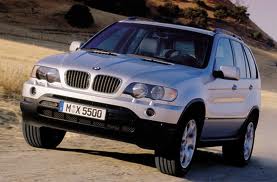


This edition of the Porsche 911 Carrera 3.0 is the 5 speed / Manual version and was first brought out in 1976. This was at around the same time as the introduction of the 1977 Porsche 911 Turbo and the 1977 Lamborghini Countach LP400S.This particular Porsche 911 has a 2994cc Naturally Aspirated Petrol powerplant with 6 cylinders in a F formation.
The 911 shares its Petrol F6 engine configuration with the likes of the 2017 Porsche 911 GT2 RS and the 2016 Porsche 911 Turbo S 991 II. If you're looking for other fast cars which share the 911's Rear Wheel Drive, Coupe combination then how about the 1982 Fiat X1/9 1.5 8V or the 1965 Aston-Martin DB6 1965.
Weighing in at 1120 kgs (2469 lbs) this makes the Porsche 911 Carrera 3.0 in the same weight category as the 2020 Lotus Exige Sport 410 Roadster 3.5 V6 or the give or take 50kg.
In terms of power the 2994cc 12V F6 engine produces 197 bhp (146 kW) @ 6000 rpm similar to the 2020 Abarth 695 70th Anniversario 1.4 Turbo (177 bhp) or the 2020 Audi A1 Sportback 40 TFSI S tronic S line (197 bhp).
The Naturally Aspirated F6 throws out 188 lb-ft (254.8 Nm) @ 4200 rpm placing it with cars of similar torque performance figures such as the 2020 Abarth 695 70th Anniversario 1.4 Turbo (184 lb-ft) or the 2020 Audi A1 A1 Sportback 35 TFSI S tronic S line (184 lb-ft).
If one combines the weight with power or torque performance for the Porsche 911 you can get a better idea of it's real world performance.
![Subaru Impreza WRX STI V1 - Classic JDM - [1994] image Subaru Impreza WRX STI V1 - Classic JDM - [1994] image](/editionimages/625.jpg)
The 1994 Subaru Impreza WRX STI V1 - Classic JDM (200.8 bhp per ton) has similar Bhp Per Ton stats as the Porsche 911.
The Porsche 911 has a Power to weight ratio of 175.8 bhp per ton and 167.8 lb-ft per ton. Bhp Per Ton figures of the 1976 911 competing with the 1994 Subaru Impreza WRX STI V1 - Classic JDM (200.8 bhp per ton) or the 2015 BMW 3 Series 340i F30 LCI (200.6 bhp per ton).
If you agree with the late great Carroll Shelby then arguably an even better indicator of potential performance, Torque. Use weight as well and you end up with - Torque per ton, with the Porsche 911 generating around 167.8 lb-ft per ton. If you're curious as to what other cars have as much torque to weight then look no further than the 2008 Chevrolet Cobalt SS 2.0 Turbo (192.7 lb-ft per ton) or the 1955 Ford Thunderbird 292 Fordomatic 1st Gen. (192.5 lb-ft per ton).
With a 0-60mph time of 6.30 secs or a 0-100km/h (0-62mph) of 6.5 secs, this made the Porsche 911 Carrera 3.0 as fast as the 2024 Mazda CX-90 S 3.3 Turbo (6.30 secs) the 2020 Audi A1 Sportback 40 TFSI S tronic S line (6.30 secs) the 2018 Ford Fiesta ST 1.5 Turbo 5 door (6.30 secs) the or the 2018 Ford Fiesta ST 1.5 Turbo (6.30 secs). This Porsche 911 Carrera 3.0 is also faster than the 2022 Mini Cooper John Cooper Works Cabrio 2.0 Turbo (6.40 secs) the 2016 Ford Fiesta ST 200 1.6 Turbo (6.40 secs) the 2012 Subaru Forester STi tS 2.5L Turbo (6.40 secs) the and the 2011 Honda Civic 2.0i 16v VTEC Type R - FN2 (6.40 secs).
When talking about the performance of the Porsche 911 on the drag strip it can reach a quarter mile in an estimated 14.66 secs @ 93.3 mph. Similar performance down the quarter mile can be found with the the 2006 Infiniti G35 3.5 V6 X (14.60 secs), the 1959 Ferrari 250 GT 3.0L V12 (14.62 secs), and the 1998 Toyota Mark II 2.5 Tourer V (14.62 secs).
Modern performance cars are often artificially restricted to 155mph. The 1976 version of the Porsche 911 Carrera 3.0 has a maximum speed of 143mph.
If maxing out your car on the AutoBahn is your thing and you're wondering what's faster than the 1976 Porsche 911 Carrera 3.0 then how about the 2023 Porsche Cayenne Coupe 3.0 V6 Turbo (154 mph), the 2023 Porsche Cayenne 3.0 V6 Turbo (154 mph), or the 2019 Peugeot 508 PureTech 225 GT S and S (154 mph).









Ford Mustang 289 Fastback 4.7 V8
Engine: Naturally Aspirated Petrol | 4727cc 16v V8
Top Speed: 120 mph
0-60mph: 8.30 seconds

BMW X5 4.4 V8
Engine: Naturally Aspirated Petrol | 4398cc 32v V8
Top Speed: 207.6 kph
0-100kph: 7.6 seconds



















